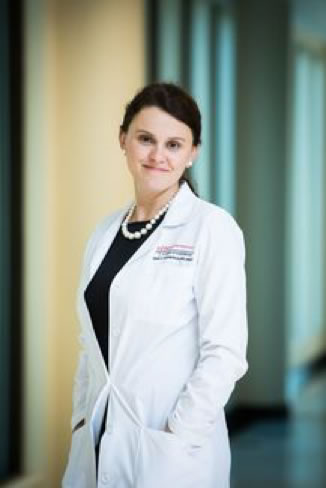 As part of the National Infertility Awareness Week (#NIAW #flipthescript) Meeting or Beating the Age Barrier of Infertility by Elena Trukhacheva MD, MSCI, President and Medical Director of Reproductive Medicine Institute
As part of the National Infertility Awareness Week (#NIAW #flipthescript) Meeting or Beating the Age Barrier of Infertility by Elena Trukhacheva MD, MSCI, President and Medical Director of Reproductive Medicine Institute
Aging oocytes, Advanced Maternal Age, Diminished Ovarian Reserve…by any other name, these are the ‘labels’ that many women over 35 may hear when they’re not expecting, and trying to figure out why. Yet, in the face of Father Time, it seems as though nothing can be done, particularly when it comes to Biology.
Elena Trukhacheva MD, MSCI, President and Medical Director of Reproductive Medicine Institute with locations throughout Chicago and the suburbs, knows these discussions all too well. “Many women come to us in peak physical condition, looking 10 years younger than they really are,” says Trukhacheva from her Downtown office. “But, your ovaries don’t care. They are programmed by their own clock, one that tends to favor the younger egg.” Trukhacheva points to statistics that demonstrate a dramatic drop in fertility, often starting as early as 30 years old. “By the age of 40,” says Trukhacheva, “a woman’s egg supply is approximately 3% of the million eggs she was born with, making her odds of conceiving and delivering a child less than 10%.”
Yet, despite what may seem like somber odds, Trukhacheva points to some methods of beating the clock:
- Preimplantation Genetic Screening (PGS) – An option when doing Invitro Fertilization (IVF) is to utilize PGS as a means for determining each embryo’s chromosomal ‘health’. It’s not just the number of eggs that decrease as a woman ages, but the quality of those eggs as well. By the early 40’s, as many as 90% of eggs will have a chromosomal abnormality which can result in a variety of genetic conditions including Down Syndrome. Chromosomal abnormalities can also result in an embryo that does not implant or is miscarried.
By utilizing PGS and only selecting the healthy embryos to transfer, the chance of a pregnancy, as well as a chromosomally normal pregnancy, are greatly increased, allowing for parity of outcomes, even when comparing women of different ages.
And since chromosomal abnormalities exist in women of every age (despite increasing over time), PGS can also help balance the odds for any woman to conceive and carry a healthy pregnancy.
Approved by the American Society of Reproductive Medicine (ASRM) as a non-experimental means of preserving fertility, egg freezing can help women past their reproductive ‘prime’ to conceive. Provided that eggs are frozen at a younger age (<35), egg freezing can offer an ‘insurance policy’ to women whose life circumstances, health etc. prevent them from conceiving a child during their ‘peak reproductive years’. “By no means should Egg Freezing be used as a reason to put off having children,” says Dr. Trukhacheva. “Often times, however, professional, personal or medical reasons make this scenario difficult to impossible. Egg freezing then provides another opportunity to ‘level the playing field’ in later years,’ allowing a 40 something woman to conceive when eggs that were frozen in her 20’s or 30’s.’
- Donor Egg – When a woman feels as though she has exhausted her resources (medically, financially or emotionally) to conceive with her own eggs due to age, medical/congenital issues etc., donor eggs provide an opportunity to carry and deliver a child. Studies have shown that even if a woman is perimenopausal or in menopause, she can successfully conceive and carry using an embryo created from donor eggs.
- The rule of 3’s – If a woman, regardless of age has conceived and made it out of the first trimester, her odds of the pregnancy resulting in a live birth are the same, regardless of age.
An important caveat to note is that the risk of chromosomal abnormalities that affect the baby but not the pregnancy, still increase with age.
“Human Reproduction is an inefficient process at best, regardless of age,” says Trukhacheva. “But for those who are entering the process later in the game, it’s nice to know that there are options.”
Find out more:
https://www.reproductivemedicineinstitute.com/
 As part of the National Infertility Awareness Week (#NIAW #flipthescript) Meeting or Beating the Age Barrier of Infertility by Elena Trukhacheva MD, MSCI, President and Medical Director of Reproductive Medicine Institute
Aging oocytes, Advanced Maternal Age, Diminished Ovarian Reserve…by any other name, these are the ‘labels’ that many women over 35 may hear when they’re not expecting, and trying to figure out why. Yet, in the face of Father Time, it seems as though nothing can be done, particularly when it comes to Biology.
Elena Trukhacheva MD, MSCI, President and Medical Director of Reproductive Medicine Institute with locations throughout Chicago and the suburbs, knows these discussions all too well. “Many women come to us in peak physical condition, looking 10 years younger than they really are,” says Trukhacheva from her Downtown office. “But, your ovaries don’t care. They are programmed by their own clock, one that tends to favor the younger egg.” Trukhacheva points to statistics that demonstrate a dramatic drop in fertility, often starting as early as 30 years old. “By the age of 40,” says Trukhacheva, “a woman’s egg supply is approximately 3% of the million eggs she was born with, making her odds of conceiving and delivering a child less than 10%.”
Yet, despite what may seem like somber odds, Trukhacheva points to some methods of beating the clock:
As part of the National Infertility Awareness Week (#NIAW #flipthescript) Meeting or Beating the Age Barrier of Infertility by Elena Trukhacheva MD, MSCI, President and Medical Director of Reproductive Medicine Institute
Aging oocytes, Advanced Maternal Age, Diminished Ovarian Reserve…by any other name, these are the ‘labels’ that many women over 35 may hear when they’re not expecting, and trying to figure out why. Yet, in the face of Father Time, it seems as though nothing can be done, particularly when it comes to Biology.
Elena Trukhacheva MD, MSCI, President and Medical Director of Reproductive Medicine Institute with locations throughout Chicago and the suburbs, knows these discussions all too well. “Many women come to us in peak physical condition, looking 10 years younger than they really are,” says Trukhacheva from her Downtown office. “But, your ovaries don’t care. They are programmed by their own clock, one that tends to favor the younger egg.” Trukhacheva points to statistics that demonstrate a dramatic drop in fertility, often starting as early as 30 years old. “By the age of 40,” says Trukhacheva, “a woman’s egg supply is approximately 3% of the million eggs she was born with, making her odds of conceiving and delivering a child less than 10%.”
Yet, despite what may seem like somber odds, Trukhacheva points to some methods of beating the clock:



